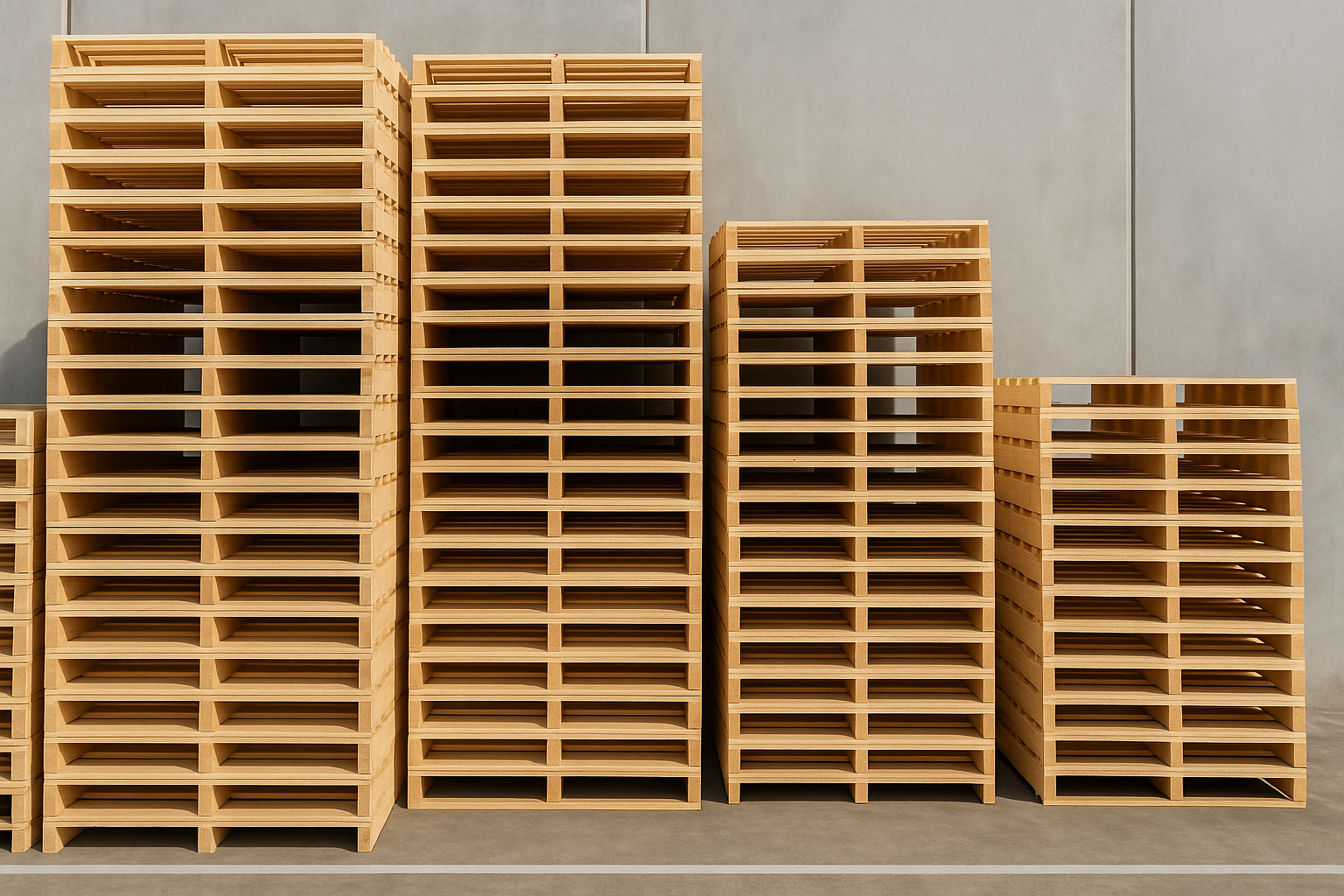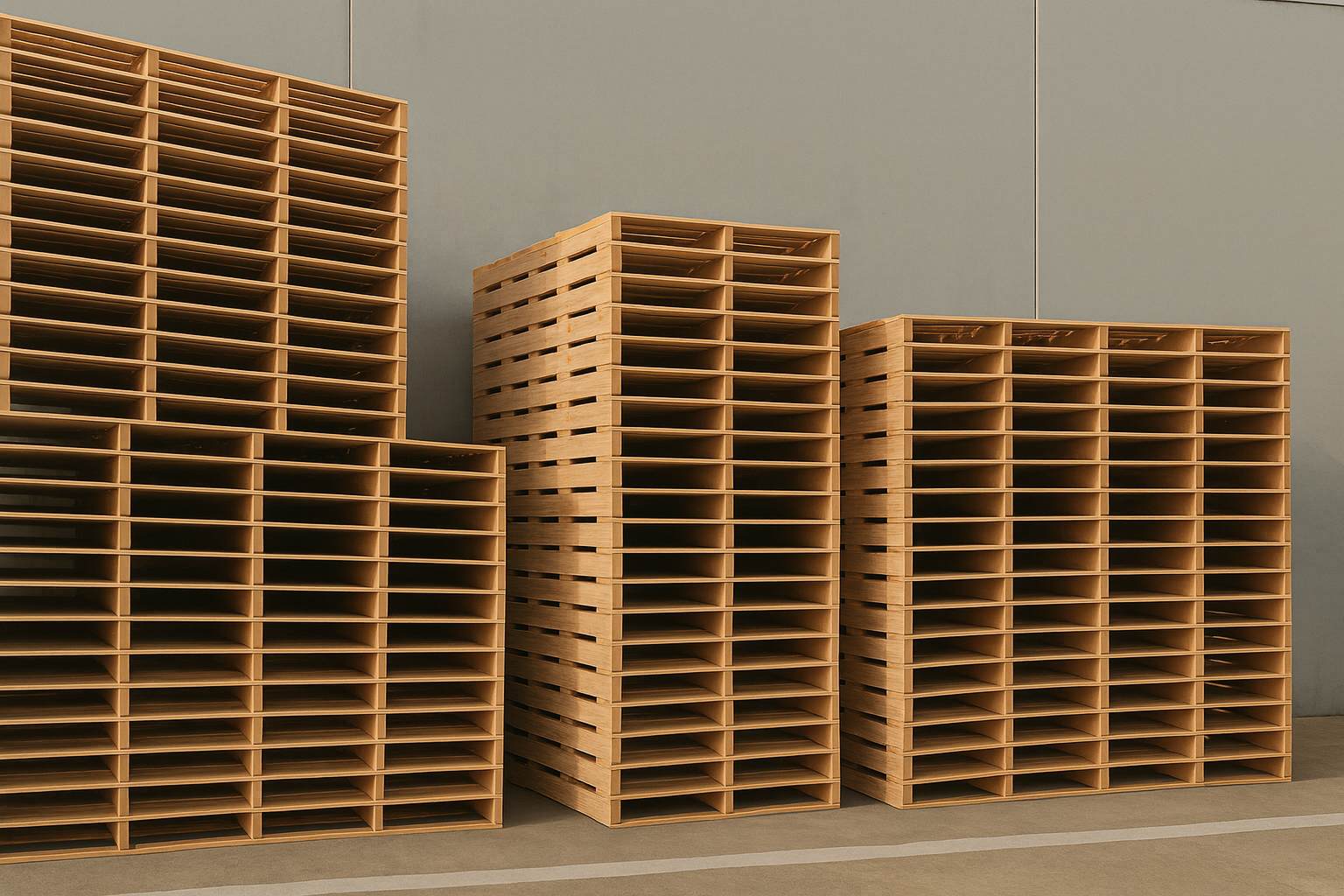At a glance:
- As logistics regulations tighten, choosing the right pallet treatment is crucial for compliance and sustainability.
- Heat-treated pallets use high-temperature kilns to eliminate pests without chemicals, meeting ISPM-15 standards.
- Fumigated pallets are treated with methyl bromide, an effective but environmentally harmful and chemically intensive substance.
- Heat-treated options are safer for sensitive goods and more durable, though they come with slightly higher upfront costs.
- Fumigated pallets offer quicker turnaround times but are facing growing global restrictions due to ozone impact.
- Businesses with ESG goals and long-term logistics strategies are increasingly shifting toward heat-treated pallets.
- The right choice depends on destination regulations, product sensitivity, sustainability goals, and the potential for reuse.
As global logistics grows more complex, so too do the regulations that govern it. Hidden within the layers of freight forwarding, export compliance, and warehouse operations lies a critical choice that can impact supply chain sustainability, cargo safety, and legal compliance: how your wooden pallets are treated. Heat-treated and fumigated pallets may look similar at first glance, but they serve very different roles in your global operations.
Whether you are a Melbourne-based manufacturer or an international exporter, selecting the right pallet supplier can make all the difference. Buy wooden pallets and ensure your supply chain meets all international requirements.
This article dissects both methods and offers insights to help you make informed procurement decisions that meet both international phytosanitary standards and your operational priorities.
What Are Heat-Treated Wooden Pallets?
Heat treatment involves subjecting wooden pallets to high temperatures in a kiln or closed chamber, with wood core temperature reaching a minimum of 56°C for at least 30 minutes. This process is designed to eliminate pests and pathogens without the use of chemicals, making it compliant with ISPM-15 standards. Australia’s Department of Agriculture (DAFF) strictly enforces ISPM-15 import and export regulations, making heat-treated pallets a preferred and compliant solution for businesses operating from Melbourne and beyond.
The benefits of heat-treated pallets extend beyond compliance. They are completely chemical-free, making them a safe option for transporting food, pharmaceuticals, and other sensitive goods. Because the process strengthens the wood by reducing its moisture content, the pallets are also more durable and long-lasting. Australian industries ranging from agriculture and retail to pharmaceuticals frequently rely on heat-treated pallets due to their reliability and eco-friendly profile.
What Are Fumigated Wooden Pallets?
Fumigation is an alternative method of pest control where wooden pallets are exposed to methyl bromide gas. This process effectively eradicates any insects or larvae present in the wood, bringing the pallets in line with ISPM-15 compliance.
Fumigated pallets offer a quick turnaround, making them appealing for businesses requiring rapid treatment for immediate shipment. Their effectiveness in pest eradication is well recognised, particularly in high-risk export markets.
However, methyl bromide is a controlled substance because of its serious effects on human health and the environment, particularly its role in ozone layer depletion. Handling and disposal of fumigated pallets must therefore follow strict regulatory guidelines. Moreover, the presence of chemical residues may limit their use in sensitive industries, such as the food and pharmaceutical sectors.
Head-to-Head Comparison: HT vs. MB
| Feature | Heat-Treated Pallets | Fumigated Pallets |
| Treatment Process | Heat-treated pallets are processed in a high-temperature kiln that eliminates pests and pathogens by raising the wood’s core temperature to required standards. | Fumigated pallets undergo chemical treatment using methyl bromide (MB), which penetrates the wood to kill insects and larvae. |
| Environmental Impact | This method is environmentally friendly as it relies solely on heat without any harmful emissions. | Fumigation with methyl bromide is harmful to the ozone layer and is considered an environmental hazard. |
| Residue/Chemicals | Heat treatment leaves no chemical residue, making it safe for handling and storage. | Fumigated pallets may retain traces of chemical residue, which can pose health and safety concerns. |
| Cost | Heat-treated pallets generally involve a slightly higher upfront cost due to the energy used in the kiln process. | Fumigated pallets are typically cheaper initially, as chemical treatment is a quicker and less energy-intensive process. |
| Regulatory Trends | Heat-treated pallets are preferred in many countries due to growing emphasis on sustainable and safe logistics practices. | Fumigated pallets are facing increasing restrictions globally, particularly due to environmental and health regulations. |
| Shelf Life/Reuse | Heat-treated pallets are more durable and better suited for repeated use in various supply chains. | Fumigated pallets may degrade more quickly over time, limiting their reuse potential. |
This comparison highlights not only functional differences but also strategic considerations for long-term planning. Companies increasingly favour heat-treated pallets due to evolving regulations and growing sustainability commitments.
Global Regulations and Shifting Preferences
International shipping regulations increasingly favour heat treatment. Most countries, including Australia, have imposed strict limitations or complete bans on methyl bromide use. In Melbourne and across Australia, heat-treated pallets are the go-to option for export-focused businesses.
This pattern follows the global movement towards sustainable logistics and green supply chain management. Companies with strong Environmental, Social, and Governance (ESG) frameworks are turning to heat-treated pallets as a proactive measure to reduce their reliance on chemicals and environmental impact.
Which Pallet Treatment Is Right for You?
Selecting the right pallet treatment depends on several operational factors. If you are shipping goods to countries with tight restrictions on chemical fumigation, heat-treated pallets are the obvious choice. They’re also ideal for industries prioritising hygiene and sustainability.
Cost-conscious businesses may initially lean toward fumigated pallets due to their lower price, but long-term durability and regulatory favour often tilt the value scale toward heat treatment.
Use this checklist to guide your decision:
- Destination Country Requirements: Check import rules on pallet treatments.
- Product Sensitivity: Consider if your cargo can be exposed to chemical residues.
- Sustainability Goals: Align treatment methods with ESG commitments.
- Budget Constraints: Factor in both initial setting budget and long-term reuse potential.
The Clear Path Forward
As the logistics landscape shifts, so too must your approach to pallet selection. Understanding the key differences between heat-treated and fumigated pallets enables your business to remain compliant, environmentally responsible, and operationally efficient.
While both treatments serve their purpose, the long-term advantages of heat-treated pallets are increasingly compelling for organisations striving to future-proof their supply chain. When it comes to pallet manufacturers you can trust, Waterstone Pallets offers expertly crafted solutions for businesses across Melbourne and beyond.
Make the Right Move with Confidence
For tailored advice and high-quality wooden pallets that meet global standards, partner with Waterstone Pallets. Whether your priority is compliance, cost-efficiency, or sustainability, our expert team will help you select the right solution for your supply chain needs.
Explore our range of heat-treated pallets for export or buy timber pallets designed for Australian businesses today. Get in touch to discuss your requirements or request a quote now.



